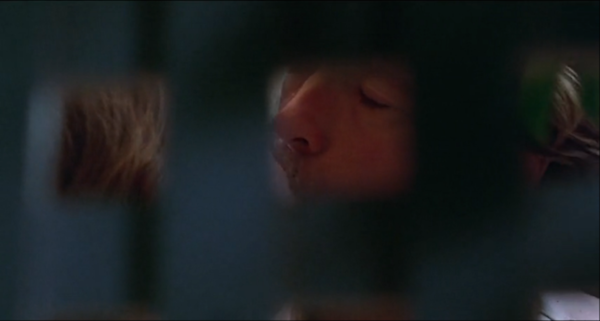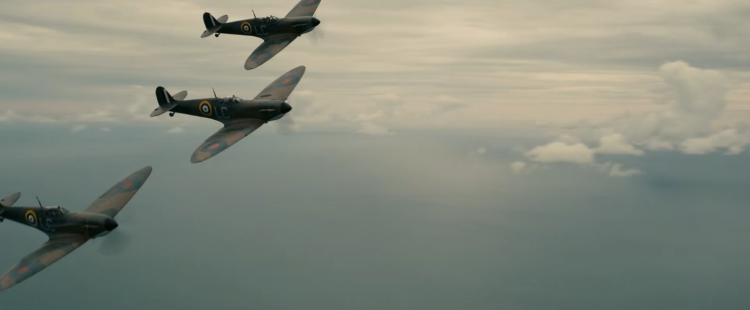
Three Billboards Outside of Ebbing, Missouri (and oooh baby do I love that title) has an unfortunate sin within it that I wish it didn’t have. Something certain people would argue is present in last year’s big Best Picture frontrunner* La La Land, but in a more direct and frankly unpleasant manner. Before I can get into what that is, I gotta lay out what it’s about.
The premise of writer/director Martin McDonagh’s screenplay begins eight months after the investigation (ten months after the crime itself) of the rape and murder of teenage Angela Hayes (Kathryn Newton) and setting the film that far ahead of the crime establishes it within the film as a long cold case that McDonagh is not concerned with solving. This is not a mystery. Three Billboards Outside of Ebbing, Missouri is instead about the aftermath of a town’s lack of closure from it and the woman at the center of it all is Angela’s misanthropic hard-headed mother Mildred (Frances McDormand), who in her frustration tries to light a fire under Sheriff Bill Willoughby (Woody Harrelson) by renting three billboards close to her home with a message on each one: “Raped while dying”, “And still no arrests”, and “How come, Chief Willoughby?”.
Obviously, that’s going to inflame a lot of outrage in such a small town as Ebbing (where most of the action takes place in only three locations). It stresses the hell out of Mildred’s depressed son and Angela’s sister Robbie (Lucas Hedges) to continue to be reminded of her awful death, it infuriates Mildred’s ex-husband and Angela’s father Charlie (John Hawkes) with his history of violence and stone animosity to his ex-wife, and it especially puts Mildred on the wrong side of the largely corrupt police force. It certainly upsets Chief Willoughby despite his understanding of Mildred’s pain and wish to solve the case and in the context of a personal development that feels too much like a spoiler to let on, but it’s the alcoholic and unruly Officer Jason Dixon (Sam Rockwell) who takes it the hardest and tries to abuse his power unrestrainedly to make the life of anybody even slightly involved with Mildred a living hell. This is not particularly new to Dixon, considering how quickly Mildred throws his history of racially charged police brutality at him and that’s where it becomes a little less kosher for me.

Three Billboards Outside of Ebbing, Missouri does not want to be about racism. In a town full of bigots in every corner (McDonagh’s dialogue is chock full of some very unfortunate phrasing about race, sexuality, physical deficiencies, mental deficiencies, and so on), it just so happens to have to deal with a local police station in a town where it reflects all of the flaws and problems with the people inhabiting it themselves. And unfortunately there is no possible way to make a film revolving around police officers in such a toxic environment that doesn’t identify brutality and racism without being painfully naive. That those things play as window dressing to the subsequent interiority of characters who partake in them is untimely given this day and age of BlackLivesMatter (especially since the only three black characters in the film have little to no characterization, which is just awful) and that’s enough to hold it against Three Billboards, but I don’t see that as the sum of its parts.
Me, I just happen to think it’s a really well-sketched story of three people who have to deal with grief and failure in their own ways and all three of those people are portrayed in tragic and bitter shades by McDormand, Harrelson, and Rockwell (preferred in that order), spitting out McDonagh’s venom like a second language. McDormand especially makes the profanities that come out of her feel effortless with a clear amount of hurt and self-preservation behind them to inform us enough of the character within her first few scenes. Harrelson and Rockwell approach their own characters from an opposing spectrum of sensitivity and vulnerability that softens the edges of their characters in a way that helps the subsequent third act feel natural and less objectionable (Harrelson’s Willoughby is absolute soft edges and diplomacy, Rockwell’s Dixon an unfortunate shit of a person).
McDonagh’s script is obviously not perfect. In fact, I would call it the weakest element of the whole film. It’s thematically clumsy on those elements and there’s missteps on its structure – such as the decision to include a flashback that doesn’t really tell us anything about Angela we wouldn’t already learn later and imbue some eye-rollingly contrived dark irony – but it’s much closer to McDonagh’s brilliant feature debut In Bruges to his merely fine sophomore effort Seven Psychopaths, full of a mechanical domino effect in incidents and character motivations that ends up slowly billowing to a fire before it just exhausts itself with energy (in a very good way) in the final act and mostly keeping this up with a muted but present sense of bitter black humor for palatability and unexpected sympathy for characters that one might argue doesn’t deserve it.

And that still leaves enough praise for how McDonagh as a director works so well to keep the small scale of the town established (with the help of an ensemble that honestly has little to work with but make the best of it – Samara Weaving, Jon Hawkes, Peter Dinklage, and Caleb Landry Jones all feeling lived-in) by containing most of the primary action to three major spots, one of which must have been a miracle of location scouting in having the police station and the publicity office where Mildred rents the billboards, setting the stage for one very wild and violent long-shot sequence as well as a little experiment in paced cutting by Jon Gregory as we witness Mildred take out her fiery wrath in the middle of the night unknowing of her shocking victim. Ben Davis’ photography and Carter Burwell’s score provide a sarcastic rural Americana feel to the proceedings (including the bluest nights one can dream of with a brilliant wide shot of Mildred rushing in between two blazing fires in the middle of an otherwise vacant field) all of which give the full package to diving deep into these characters’ sense of their lives being broken by a rape-murder and their inability to find closure from it all.
In the end, it’s all the McDormand/Rockwell show and McDonagh seems to want to arrange all the best elements of his film to compliment their presence. And in Rockwell’s case especially, this depends on how your mileage may vary because it’s impossible to pretend Three Billboards does not put itself right in the crosshairs of those who would rightfully call it out as giving interiority to racists and homophobes and general bullies and we live in an age where some people might not want to see that. But there’s something pretty comforting about its willingness to see the clumsy sloppiness in anger and hate and how people just don’t know how to square with their problems. Some use it to attack and blame, some use it to abuse and beat down and Three Billboards doesn’t pretend to have an answer to that, just a very sad lens to the people who think they found it.
*While it’s probably not THE frontrunner this year – I don’t think there is a “THE frontrunner” yet – Three Billboards is certainly A frontrunner.

















